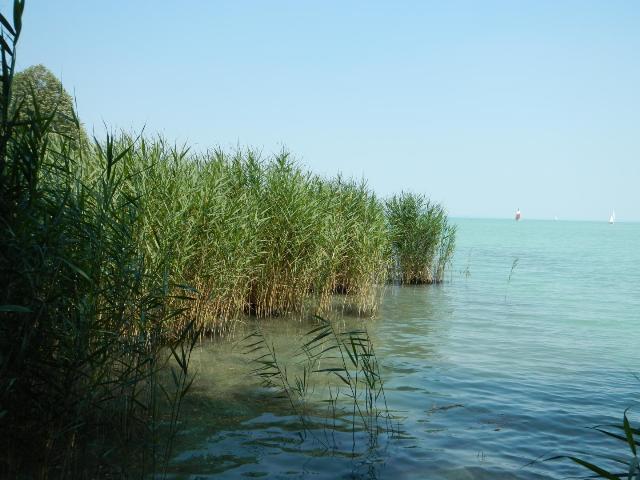Feb 9 2015
An international team led by scientists at the University of Leicester has developed a way to increase our understanding of the die-back of reeds throughout Europe - including popular tourist areas - through satellite and aircraft monitoring systems.
 Image shows reeds around Lake Balaton in Hungary. Credit: University of Leicester
Image shows reeds around Lake Balaton in Hungary. Credit: University of Leicester
Known as 'reed die-back', the condition has affected reeds throughout many parts of Europe since the 1960s and has been intensively studied by biologists and ecologists for decades. The exact causes of reed die-back are still being debated today.
The research team from the University of Leicester, Hungarian Academy of Sciences and other partners has developed a way to map the extent of reed die-back syndrome using aircraft and satellites.
PhD student Dimitris Stratoulias and his supervisors Professor Heiko Balzter from the University of Leicester's Department of Geography, Dr Viktor Tóth and Dr Andras Zlinszky from the Hungarian Centre for Ecological Research studied the lake shore around Europe's largest lake, Lake Balaton in Hungary, which attracts over 4 million tourists each year.
The study describes how a technique called imaging spectroscopy can be applied to understand reed die-back. Hyperspectral data collected from modern sensors on board of aircraft and satellites can measure radiation that is invisible to the human eye, such as near-infrared wavelengths.
The team hope that the data can tell them something about the ecological status of the reed plants by measuring their chlorophyll absorption.
Mr Stratoulias waded through reed belts around the lake with a hand-held spectroradiometer, a portable fluorometer and a chlorophyll metre and recorded information about the amount of light and infrared radiation reflected from the reeds.
He found several indices that were related to the ecological status of the plants. In the next step of the project, airborne hyperspectral images with over 250 spectral bands revealed that the researchers can map the extent of these transformations of reed plants from the skies.
The "photosystem" of the plants helps them grow. Its activity can be mapped from specific wavelengths of 463 and 488 nanometres, amongst others.
Professor Heiko Balzter, Director of the Centre for Landscape and Climate Research at the University of Leicester and co-author of the study, said: "We are very happy that our way of mapping the reed status is more accurate than other similar methods. The indices we have developed at leaf level for reed mapping will enable us to map the extent of the damage. Ultimately, we hope to get to the roots of the reed die-back syndrome and find a solution."
Reeds grow along the margins of lakes and are an important part of wetland ecosystems. They belong to the grass family and can grow up to 5 metres tall. The stiff stems of reeds have been used by people for thousands of years as thatching and construction material, for making wicker baskets, arrows and pens.
Conservationists are concerned about the future of reed communities around lakes, since they form an integral part of lake shore ecosystems, and shelter a diversity of animals including insects, birds and fish.
Dimitris Stratoulias said: "We have demonstrated how vegetation parameters measured in the field can be estimated from airborne platforms and consequently from space. Images acquired from the sky can provide information exceeding largely the visual interpretation in which we are often confined. Earth observation is a fast advancing technological field and new capabilities are nowadays frequently coming to light."
Dr Viktor Tóth from the Hungarian Centre for Ecological Research added: "Freshwater lakes of Europe are artificially stabilised at a levels suitable for the tourism, but not for vegetation of the shores. Remote sensing techniques help hydrobiologists to estimate the level of die-back, and give an excellent technique to monitor future changes. Moreover, this new method could be useful not only in observation of reed, but also other types of vegetation, and even might have agricultural implications, too."